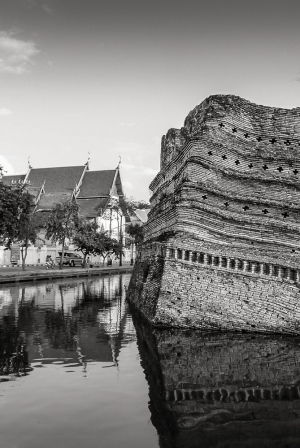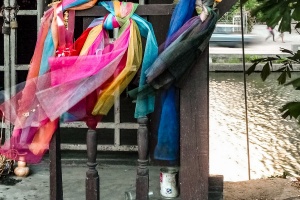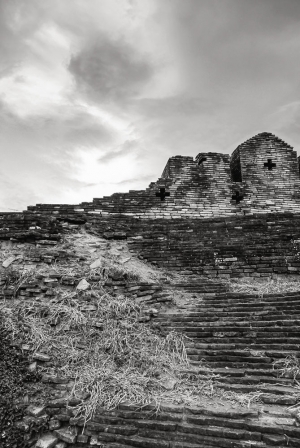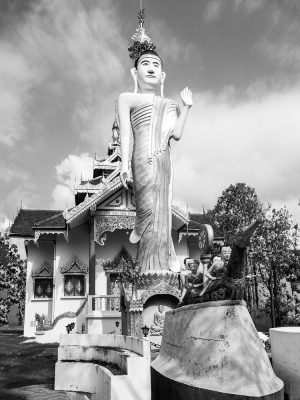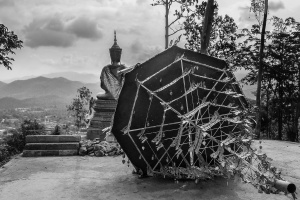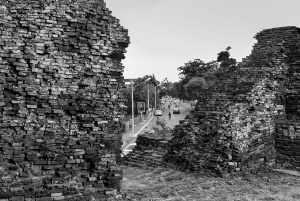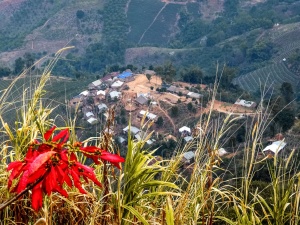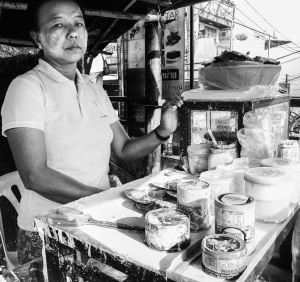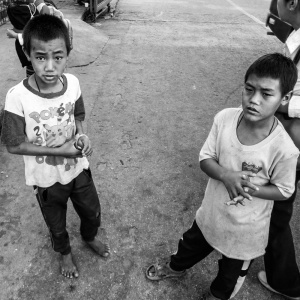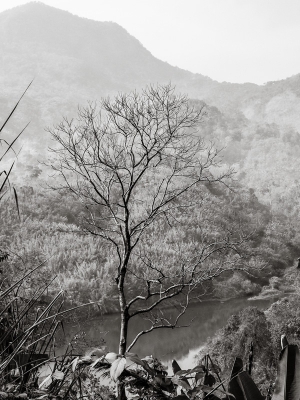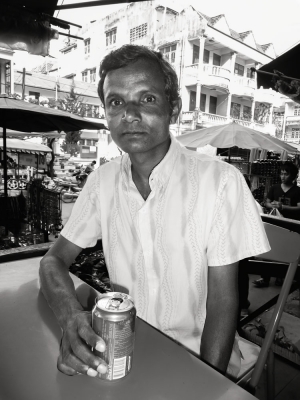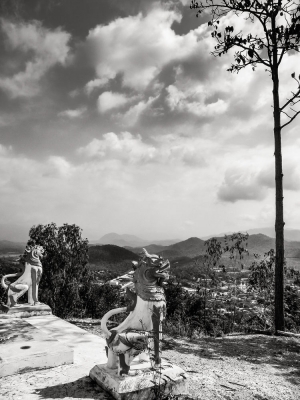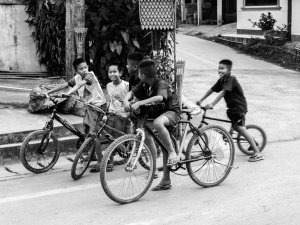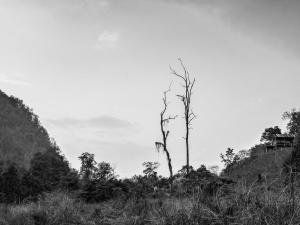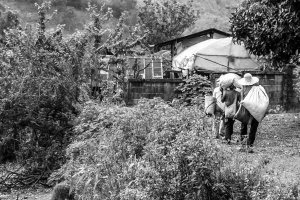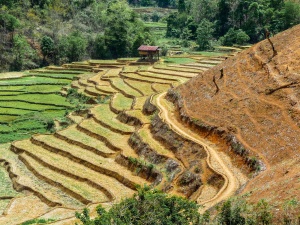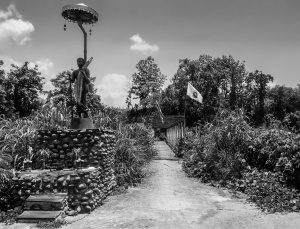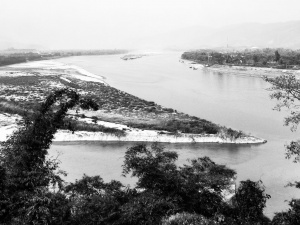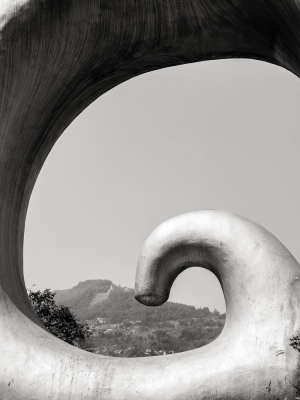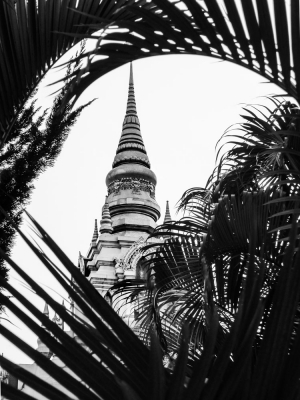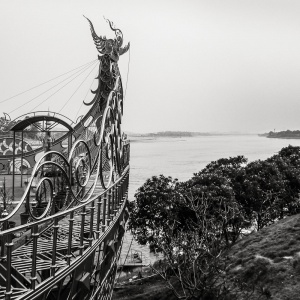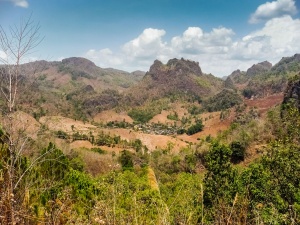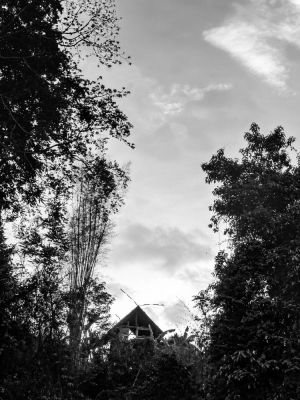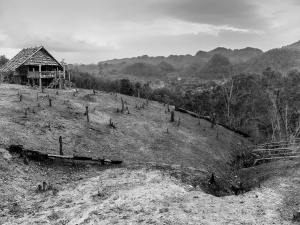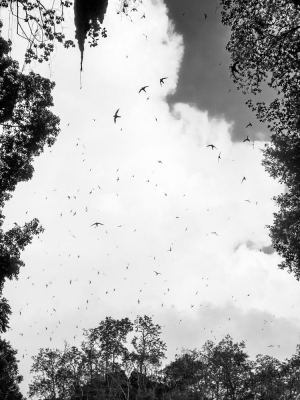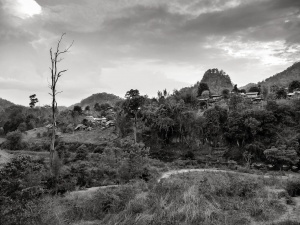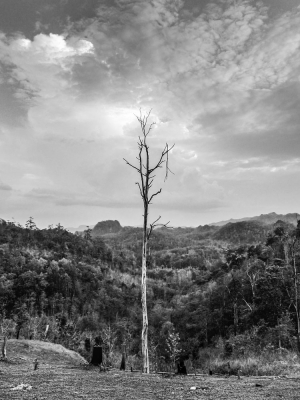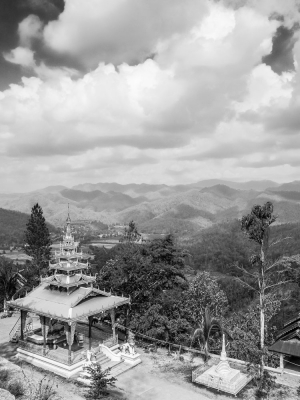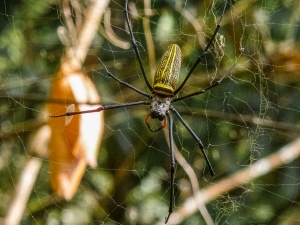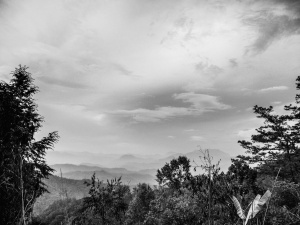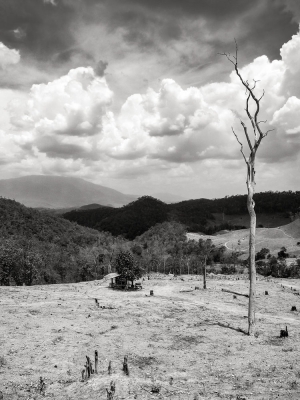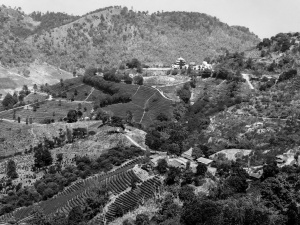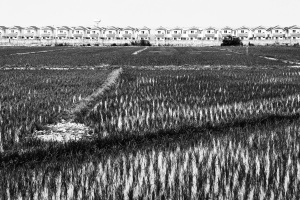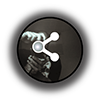Home > Northern Thailand
Northern Thailand
Despite increasing tourism and development around Urban centres such as Chiang Mai and to a lesser extent Chiang Rai, much of northern Thailand remains wild and untouched. Until relatively recently it's most northern province was a lawless frontier zone of Asia.
In the 1980s, the feared Burmese-Thai warlord Khun Sa ruled the world's heroin trade from his jungle headquarters near Chiang Rai. Consequently, as recently as the late 1990s, opium trafficking was a major source of income for the region, with drug runners settling disputes gangland-style.
Once the largest opium-growing region in the world. Covering an area of 350,000 km², the golden triangle is a luscious, fertile region of green mountains and valleys in northern Thailand, western Burma and northwestern Laos. Once upon a time, this region was the source of 70 per cent of the heroin consumed in the USA alone.
Learn More
History of the Golden Triangle opium trade
The 'Golden Triangle' represents the confluence of the Sop Ruak River and the Mekong river and may have been coined to describe the payment of gold for opium. Subsequently, the term was used to describe the opium and heroin trade around the nearby junction of Thailand, Laos, and Burma.
Introduced to the region by the British during the colonial period Opium was a major cash crop. The French also saw its advantages and encouraged cultivation in northern Vietnam but it was the Chinese who introduced large scale production and smuggling to the region.
Aggressive marketing of opium by the British in China resulted in many addicts. Some smoked the drug in opium dens, while others took opium pills. Cheap pills known as pen yen gave rise to the expression have a 'yen' for something. Chinese labourers travelling overseas would export the trait.
Opium dens opened in San Francisco and towns where Chinese railroad workers stayed. By 1890, there were a number of smokehouses in the basements of back-alley buildings in New York City. Frequenters would include businessmen and tourists, showgirls and prostitutes.
Opium Production
Opium was and remains a compound with many uses and meanings as well as a global commodity enmeshed in complex political-economic relations.
Much of the opium grown in the Golden Triangle in the 1970s, 80s and 90s was refined into a super-pure form of heroin known as China White (AKA Heroin no. 4). Favoured by intravenous drug users in the U.S., it was stronger and cheaper than the heroin from Turkey, Iran and Afghanistan that was circulating in the 1960s.
The vast majority of this China White was refined from opium in remote, but sophisticated jungle laboratories. In the 1990s, the same laboratories began producing amphetamines such as 'ice', currently a popular choice in Asia as well as Europe and the U.S.
Opium Harvest
Most of the opium produced in northern Thailand today is done so by subsistence farmers on two-acre plots of land and is usually raised as a second crop after the primary rice crop is planted in May. In most of the places where opium is grown, the land is too high and too cold for rice and any corn grown there will be of low quality.
The harvest runs from January through to February. In Southeast Asia, opium is usually prepared in wrapped bundles called jois. Each joi weighs 1.6 kilograms, which is the amount of opium produced by approximately 3,000 poppies. In Thailand, about 2.2 kilograms of raw opium would be grown on one Rai of land (1,600 m²).
Today, however, the region paints a very different picture. Khun Sa's old HQ now serves as a museum and the vast majority of the opium and heroin that is produced does so from Burma and to a much lesser extent, Laos. Very little if any is grown in northern Thailand.
Consisting of 17 provinces and covering an area of about 170,000 sq km northern Thailand's forested mountains promote a spirit of regional independence. The area was once home to the ancient Lanna Kingdom. Today, the descendants of the Lanna (Ethnic Thai's) refer to themselves as Khon Muang. Considered more laid-back than their southern counterparts, they speak a slower dialect and have different customs, language and clothing from those of Southern Thailand.
Northern Thailand's population includes not only Thais and hill tribe members but also a large number of Burmese and Chinese. Many of the latter came as part of the army of Chiang Kai-shek that fled China after the Communist victory in 1949.
The Roots of Northern Thailand
Once part of the larger Lanna Kingdom (Kingdom of a million rice fields), a region that was unified into a federation of small Thai principalities by King Mengrai in the middle of the 13th century. At the heart of this kingdom was modern-day Chiang Mai province.
At its peak, the Lanna Kingdom incorporated the present-day provinces of Chiang Rai, Lampang and Lamphun in addition to parts of China, Burma and Laos. The kingdom endured until the 16th century, upon being sacked by the Burmese.
Around the same time that Lanna was established, further south, two Thai chiefs would unite to overthrow a Khmer overlord, establishing the first truly independent Thai Kingdom, Sukhothai. The Sukhothai Kingdom existed for less than two centuries, whereupon it was sacked by the kingdom of Ayutthaya. Nevertheless, it managed to produce extraordinary Buddhist art and architecture and is credited with creating a unique Thai culture.
The Thai government is prone to promoting the idea that the Lanna and Sukhothai (the precursor of all Thai civilizations) were closely related. Recent historical research, however, actually suggests otherwise.
Hill Tribes of Northern Thailand
There are loads of different tribes in Northern Thailand and each one has its own language and fashion. In the past, all the tribes were proper into drugs. Opium to be exact. Some grew for profit. Others just for persy. There's not much about these days though because they deal coffee instead. Seems a bit strange that though because in most places you can buy it in the shops.
Anyway, the Akha tribe are one of the most colourful. Women get wasted on pipes then get dressed up in multi-coloured hats with loads of beads on. Sometimes they stage festivals to fleece tourists, where they get dressed up in heavy silver breastplates, bracelets and earrings as well as headdresses with dangling coins and silver balls.
Lisu tribe women wear colourful costumes and silver breastplates too. Meanwhile, their blokes grow opium but only to sell it. But the Lahu tribe, grow it only for smoking. They don't even sell it, just get proper shitfaced.
The costumes of the Lahu women aren't as colourful as the other tribes. They're probably off their faces most of the time and can't be arsed. All the blokes and kids wear rags.
There are loads of members in the Karen tribe but they aren't that friendly. The men wear turbans and grow opium to fund a war for independence in Burma. They're also pretty good at training elephants and most elephant drivers in the region are from the Karen tribe.
Northern Thailand's Cuisine
Learn More
Traditional dishes have been passed down over the generations from the Lanna kingdom but are also influenced by its neighbours, Burma in particular. Numerous minority groups inhabiting the region for many years such as Tai Yai, Haw Chinese and Tai Lue have also contributed to the complexities of the region's cuisine.
Flavours are neutral, so none is strongly distinctive but have a hint of salty, spicy, tangy, and sweet notes. Dishes are cooked until well done, with fresh vegetables being boiled until tender. Ingredients are primarily locally sourced, with varieties depending on the season. Pork is popular, due to its easy access and low-cost. Alternatives include beef, chicken, and duck.
Most dishes are consumed with glutinous (sticky) rice alongside various kinds of fresh vegetables and dips. Fried dishes are saturated with cooking oil and the most popular condiment used for adding flavour is field crab juice.
Unlike the central region of the country coconut milk and sugar is not a common ingredient here. Spicy curries are called Kaeng Phet (spicy hot soup). Made up primarily of local herbs, easily found in the mountainous terrain of the north and are similar to those in India and Burma. If coconut milk is added, it's called Kaeng Kathi (coconut milk soup) which differs from the curries of the central Thai region.
Popular Dishes
Khao Soi is yellow noodles in a spicy coconut milk soup, alongside preserved lettuce and red onion, yielding a pungent and peppery but harmonious taste.
Fresh vegetables minced with spices and chillies is Khanom Jeen. Khan Kanoon is a spicy jackfruit curry served with sticky rice.
Adding to the tasty, northern repertoire are several other curries such as Nam Ya Kati, Nam Ya Pa, and Nam Ngaio.
Other favourites include Sai Oua (spicy sausage), fermented pork, steamed beef, deep-fried pork rinds, and sauteed pork and vegetables. In addition to a spicy tomato and minced pork dip and a Burmese-style bacon curry.
Dishes often feature Nam Phrik, a pungent mix of fermented shrimp paste, consumed by spreading it onto boiled vegetables. Be warned, it's an acquired taste, emitting a strong, fishy odour that some may find off-putting.
Desserts of Northern Thailand are usually made of white and red glutinous rice. Khao Taen is a delicacy composed of sticky rice mixed with watermelon juice and then fried, laced with cane syrup.
Other festival favourites include Khao Tom Hua Ngok, sticky rice steamed with banana and seasoned with shredded coconut and sugar. Khanom Pat is rice flour mixed with cane syrup over an open fire and laced with shredded, salted coconut.
Parties and functions in Chiang Mai are called Khan Tok
Meals are served on a raised vessel called a 'Tok'. An entire dinner consisting of several small dishes are placed on a round, low tray with legs, surrounded by diners. Guests will share such dishes as curries, crispy fried pork skin, and northern style chilli sauces. All served with sticky rice.
The Tok come in three different sizes: Khan Tok Luang (large Tok) is used in northern royal palaces and principal temples. Khan Tok Ham (medium Tok) is used by large families. The smaller version, 'Khan Tok Noi' is used by smaller families.
Lanna style khan tok parties have become a very popular tour program, educating tourists about one of the most enjoyable cultural features of Northern Thailand. It's a distinctive way to offer a warm welcome to guests and a popular method of preserving local culture. Participants will adorn traditional dress while demonstrating folk entertainment and local food cooking.
Photographing Northern Thailand
Chiang Mai is the natural hub for forays into Northern Thailand and you may well end up spending more time here than you'd planned. More information on this ancient walled city can be found here.
Leaving the city and heading out into the mountains of Doi Inthanon national park, you'll find Thailand highest point. Beyond this, to the north-west is the charming market town of Soppong and the cavernous Lod Cave.
Further west is the ever so popular Pai and the more laid back Mae Hong Song, with it's strong Karen presence.
Completely Useless Facts about Northern Thailand
- Northern Thailand is home to sixty national parks.
- The various hill tribes of the north make up approximately eight per cent of Thailand’s total population.
- In 1961 Hardwood forests accounted for 56 per cent of Thailands total land area, by the mid-1980s however this figure had been slashed in half.
- The Northern Thai cities of Chiang Rai and Chiang Mai were built by the same king. King Meng Rai initially chose Chiang Rai as the capital of the Lanna Kingdom but later decided to build a new capital in Chiang Mai 200km to the west.
Have a wemooch elsewhere...
Inspired?
Thinking about heading out for a wee mooch around Northern Thailand?
You'll need a few things to come together for it all to work out. There's some useful stuff to be clicked and pressed below.
